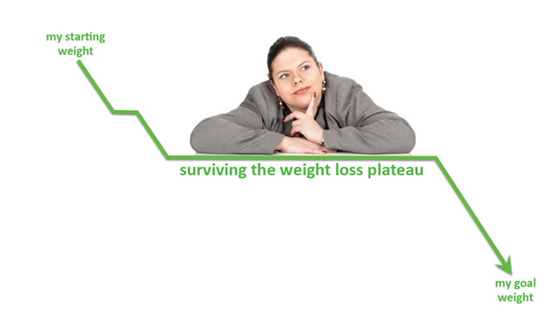Have any of you experienced a situation where you’ve been following a diet program faithfully and the weights been coming off nicely, and all of a sudden you hit a wall. Everything starts to slow right down and it doesn’t feel like you’re budging with your weight loss goals.
You may even think your metabolism has slowed down and you’ve put all this effort in for what?
Many trainers are experiencing the same thing with their clients. They’re coaching correctly and providing their clients with all the right information and a great program, but still, their client’s metabolism seems to be in reverse.
But…metabolic slow down is just the most common and “in thing” to blame it on. However, this is scientifically incorrect. This phenomenon has nothing to do with slowing of the metabolism, metabolic damage or down-regulation of the fat burning enzymes.
Plateauing means it’s time to switch things up!
There are a few things to consider here. If you are under eating your calories, your body will go into storage mode to preserve your fat cells for the long haul. Genetically we are designed to preserve fat for leaner times, and when you limit your calories, the body signals that as a caution to store.
A good rule of thumb is to never go below 1200 calories for the average woman and around 1800 calories for the average man.
Remember, there are exceptions to everything; this is just a good guideline.
Another thing to consider is that the body begins to accept the amount of calories you’re consuming and expending. You have to expend more calories than you consume and keep changing things up in order for the body to continue to burn fat.
Change your workouts every 4-6 weeks, and allow your calories to fluctuate to keep the body in a state of turbulent fluctuation. Keeping your body in a state of adjustment will put off a new baseline for a while and allow you to burn calories more efficientl.
One important point to mention is that when our body does plateau, it’s a state of maintenance that we slip into. We’ve gone into a steady state response from our caloric intake to our caloric expenditure.
This is great once you’ve reached your goals! However, if you’re still on the weight loss wagon, you have to make a change to signal a response. So my point is, plateauing isn’t a bad thing, just be able to recognize it and either keep it so you don’t gain weight back, or adjust it so you keep losing.
Another important piece of information on weight loss plateaus is water. Water is the biggest oversight when it comes to weight loss and a lot of success comes from the way your body handles water. I covered water and weight loss already in a previous article, so I won’t beat a dead horse.
But, with water being such a large component of our body, we need to ensure we keep our levels up. It roughly makes up to 45-75% of our body weight, and the variability of 45-75% is primarily due to differences in body fat.
The more body fat you have, the less water you have. Obese men and women have less water, as a percentage, than lean adults. Drink approximately 4 litres of water daily, this is a nice round number and should service the masses.
Keeping your water levels up will keep the waste in the body moving, improve digestion, assist with weight loss and reduce plateaus.
So…a quick summary…
- Eat enough calories to fuel your body
- Have a greater caloric deficit than your energy expenditure
- Shake things up with your workouts and allow caloric fluctuations occasionally to reduce the steady state response
- Drink “lots” of water
Oh, and stay away from junk food and self-sabotages.
Yours in health!



